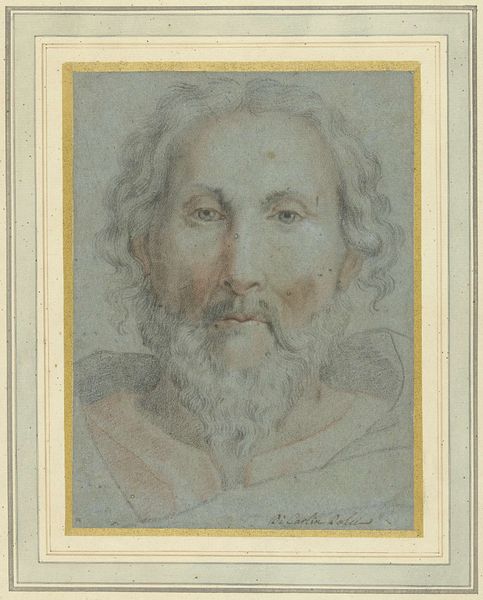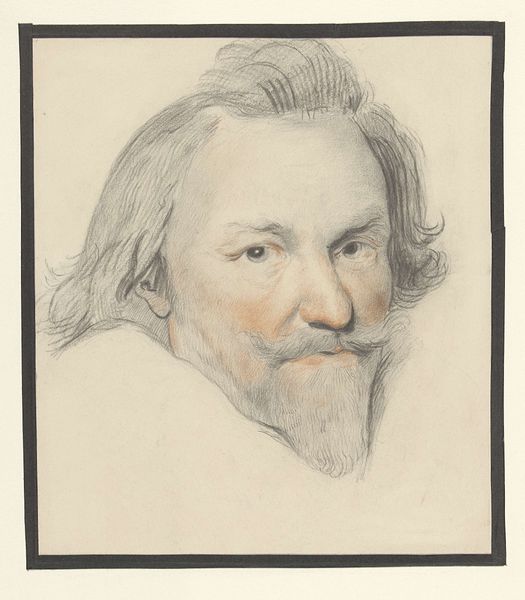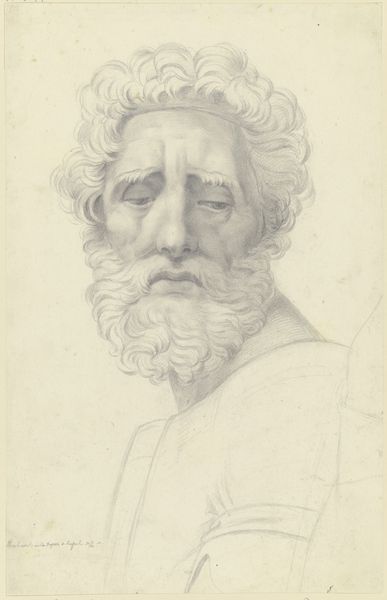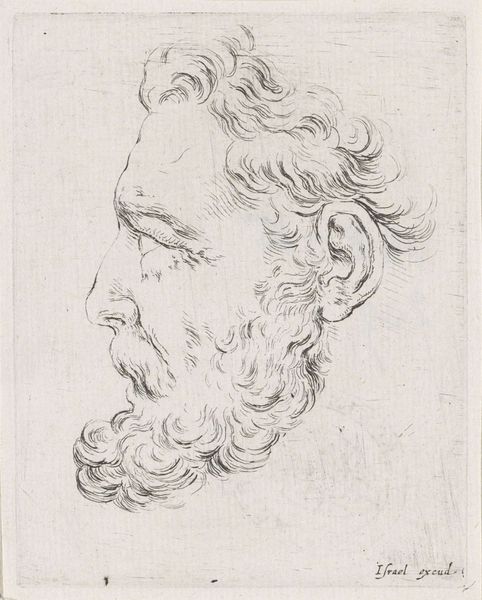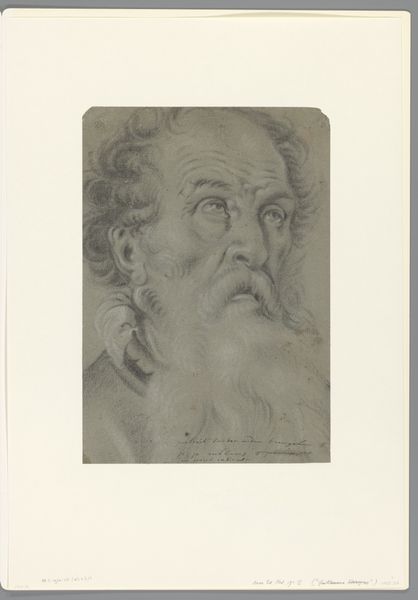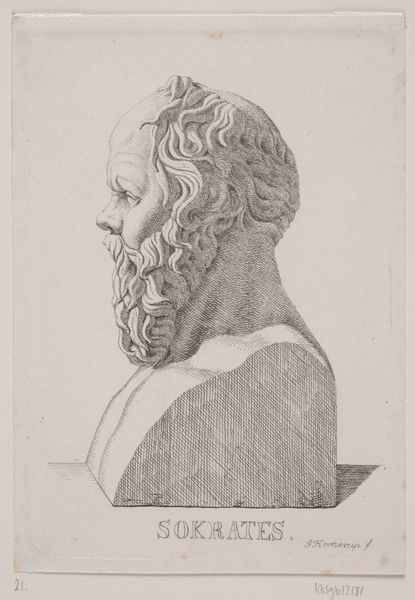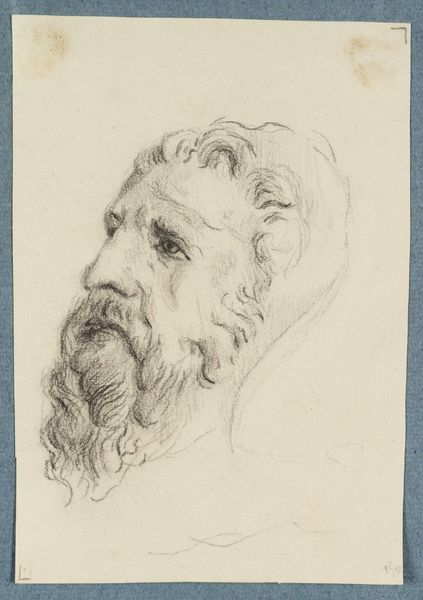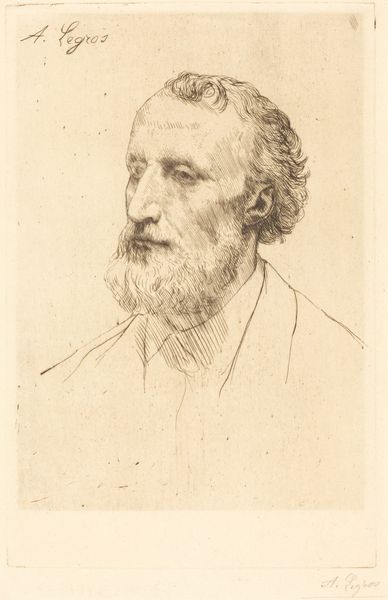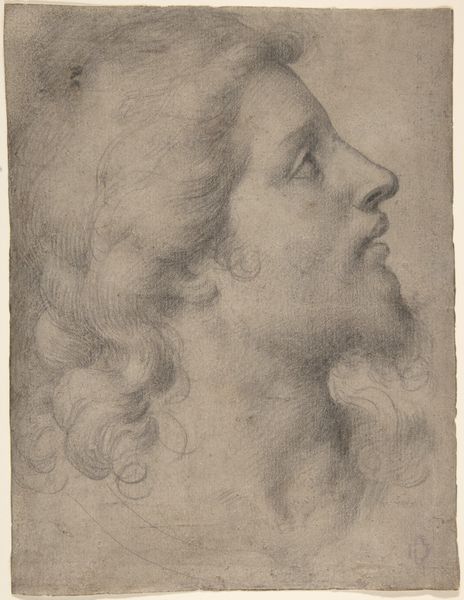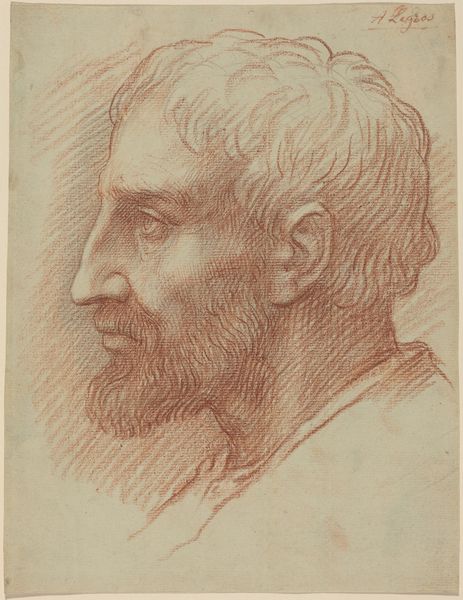
drawing, pencil
#
portrait
#
pencil drawn
#
drawing
#
caricature
#
pencil drawing
#
pencil
#
portrait drawing
#
history-painting
#
academic-art
#
realism
Dimensions: height 190 mm, width 183 mm
Copyright: Rijks Museum: Open Domain
Curator: Here we have Albertus Brondgeest's "Portret van Maurits, prins van Oranje-Nassau," a pencil drawing executed in 1847, currently residing here at the Rijksmuseum. What's your initial impression? Editor: Ha! My first thought? He looks like he just told the world's worst joke. It’s a study in subtle bemusement – the almost-smile, the twinkle in the eye... or is it the way the light hits the graphite? Curator: I see your point. He seems to be projecting a gentle state of amusement. It certainly plays on the symbolism attached to depictions of powerful rulers; typically artists convey authority, but here we have levity instead. Given that the portrait relies on delicate pencil strokes, rather than a grandiose style typical of depictions of noble figures, is Brondgeest perhaps exploring the personal humanity of Prince Maurits? Editor: Maybe. The lines are quite refined and subtle; you can almost feel the softness of his hair and beard. It almost feels like I'm peering into his soul… okay, maybe that’s a bit much, but there's something unusually intimate about it, despite him being a prince! And look how those subtle shades capture something genuine... more than just capturing a likeness, but rather expressing what lay within him. Curator: Indeed, the use of pencil allows for such subtlety. Pencil as a medium tends to be unassuming and so seems to remove layers of grandeur often associated with formal portraiture of nobility, while gently highlighting Prince Maurits' human likeness. We often see rulers in powerful poses or grand settings, communicating something of their status, but there are barely any clues to Maurits’ position in this portrait! What statement do you think that makes? Editor: That nobility can be found even without those grand trappings? Perhaps Brondgeest is quietly suggesting that true authority stems from something deeper—an inner confidence or wisdom? Though perhaps that's just me projecting my own romantic ideas onto it. Either way, this is one prince I wouldn't mind sharing a terrible joke with. Curator: A compelling reflection on the nature of leadership and likeness. Brondgeest provides an approachable image of someone often deified in artistic and cultural depictions. Editor: It’s given me something to think about! Definitely takes the edge off all those stiff, overly serious portraits hanging around here.
Comments
No comments
Be the first to comment and join the conversation on the ultimate creative platform.
